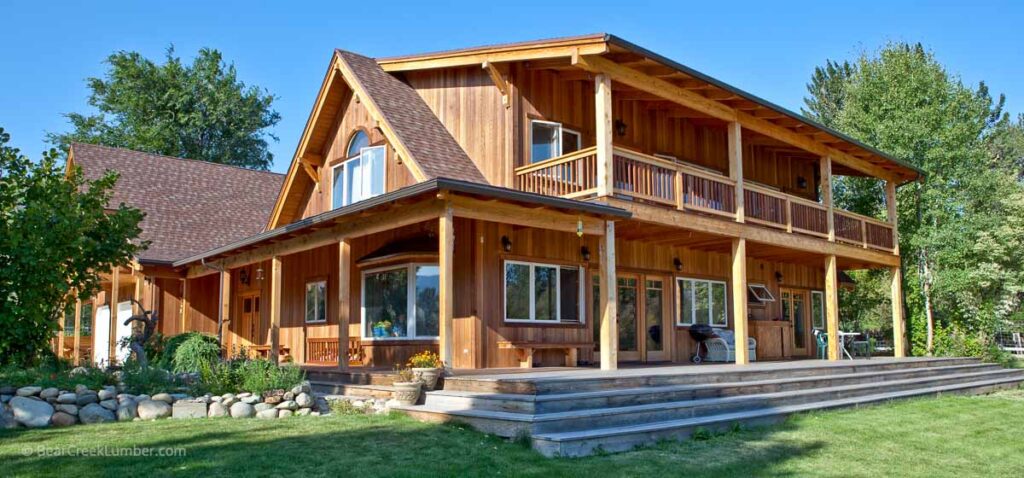
Cedar Siding: The Ultimate Guide to Transforming Your Home
When it comes to enhancing the beauty and durability of your home, cedar siding stands out as a top choice. This natural wood option not only adds a touch of elegance but also offers numerous practical benefits. In this comprehensive guide, we’ll explore everything you need to know, from its aesthetic appeal to its environmental impact.
Natural Beauty
Cedar siding is renowned for its warm, inviting appearance. The natural variations in color and texture give each piece a unique look, making your home stand out. Whether you prefer the rich, reddish-brown hues of Western Red Cedar or the lighter tones of Alaskan Yellow Cedar, there’s a style to suit every taste.
Styles of Cedar Siding:
- Bevel Siding: This classic style features overlapping boards that create a shadow line, adding depth and character to your home’s exterior.
- Tongue and Groove: Ideal for a sleek, modern look, this style fits together seamlessly, providing a smooth, uniform appearance.
- Board and Batten: Perfect for a rustic or farmhouse aesthetic, this style combines wide boards with narrow battens for a distinctive, textured look.
Durability and Longevity
One of the standout features of this species of siding is its durability. Cedar is naturally resistant to rot, decay, and insect damage, making it a long-lasting option for your home. With proper care and maintenance, cedar siding can last for decades, maintaining its beauty and structural integrity.
Maintenance Tips:
- Regular Cleaning: Keep your siding looking its best by washing it annually with a mild detergent and water.
- Staining and Sealing: To protect your siding from the elements, apply a high-quality stain or sealant every few years. This will help preserve the wood’s natural color and prevent moisture damage.
- Inspections: Regularly inspect your siding for any signs of damage or wear. Addressing issues early can prevent more significant problems down the line.
Energy Efficiency
Cedar siding isn’t just beautiful and durable; it’s also energy-efficient. Cedar acts as a natural insulator, helping to keep your home warm in the winter and cool in the summer. This can lead to significant savings on your energy bills and a more comfortable living environment year-round.
Environmental Impact
For those concerned about the environmental impact of their building materials, this species of siding is an excellent choice. Cedar is a renewable resource, harvested from sustainably managed forests. It has a lower carbon footprint compared to synthetic materials and is biodegradable at the end of its life cycle.
Sustainability Certifications:
- FSC Certification: Look for cedar siding that is certified by the Forest Stewardship Council (FSC), ensuring it comes from responsibly managed forests.
- PEFC Certification: The Programme for the Endorsement of Forest Certification (PEFC) also provides certification for sustainably sourced wood products.
Installation and Cost
Installing cedar siding can be a straightforward process, especially if you opt for pre-finished boards. While the initial cost may be higher than some synthetic options, its longevity and low maintenance requirements make it a cost-effective choice in the long run.
Installation Tips:
- Acclimatization: Allow your cedar siding to acclimate to your local climate before installation. This helps prevent warping and ensures a better fit.
- Proper Fasteners: Use stainless steel or hot-dipped galvanized nails to prevent rust and staining.
- Ventilation: Ensure proper ventilation behind the siding to prevent moisture buildup and extend the life of the wood.
Enhancing Your Home’s Curb Appeal
Cedar siding can dramatically enhance your home’s curb appeal. Its natural beauty and timeless elegance make it a favorite among homeowners and architects alike. Whether you’re building a new home or renovating an existing one, cedar siding can provide the perfect finishing touch.
Design Ideas:
- Mixed Materials: Combine cedar siding with stone or brick accents for a sophisticated, multi-textured look.
- Color Contrast: Use different stains or paints to create contrast and highlight architectural features.
- Vertical and Horizontal: Mix vertical and horizontal siding styles to add visual interest and break up large wall surfaces.
Cedar Siding vs. Other Siding Materials
When comparing cedar siding to other materials like vinyl, fiber cement, or aluminum, cedar often comes out on top for several reasons. While synthetic materials may offer lower upfront costs, they lack the natural beauty and environmental benefits of cedar. Vinyl and aluminum can fade, crack, or dent over time, whereas cedar ages gracefully, developing a beautiful patina.
Comparative Benefits:
- Aesthetic Appeal: Cedar’s natural look is unmatched by synthetic materials.
- Environmental Impact: Cedar is biodegradable and has a lower carbon footprint.
- Longevity: With proper care, cedar siding can last much longer than vinyl or aluminum.
Cedar Siding
It offers a unique blend of beauty, durability, and sustainability, making it an ideal choice for any home. Its natural insulating properties and resistance to the elements ensure that your home remains comfortable and protected for years to come. By choosing cedar, you’re not only investing in the aesthetic appeal of your home but also in its long-term value and environmental impact.
Ready to transform your home with cedar siding? Explore our extensive range of options at Bear Creek Lumber and find the perfect style to suit your needs. Visit our exterior products page for more information and inspiration.

